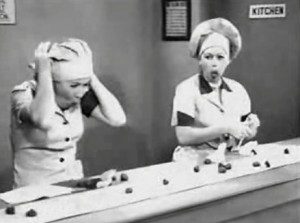When we go to the deli, we expect to take a number and wait in-line. Accomplishing any task at the department of motor vehicles can be an ordeal of waiting and then being herded out the door. This is part of life in American society. However, it should not be part of your healthcare.
Patients need personalized attention and they need a healthcare team that listens to them, no matter who is telling them to step up the pace. Sure, if pushed I can see ten patients an hour. But, I don’t want to and no doctor should be forced to. For one thing, patients are living longer with more chronic diseases than ever before. And when we rush, that is when mistakes happen and when things get overlooked. It is OK if you forgot to get your cheese to take home from the deli. It is not OK if you had an abnormal mammogram that needs a biopsy but no one had time to read the actual report and it got missed.
As the healthcare system shifts to larger health care systems and hospitals owning medical practices, it shifts from being patient focused to be a corporation run for profits. We can never get away from the fact that people need to earn money from treating patients. However, that should not be the only focus. The main aim should always be patient care and ensuring optimal patient outcomes. Most companies make more profits based on volume and the same is true in medicine. But, it should never be done at the sacrifice of patient care. Cutting nursing staff to dangerously low levels to increase profits is not putting patients first. Anyone who has worked in a hospital or been a patient in one can tell you there is a shortage of nurses and the ones working are being squeezed. Nurses should be able to take their time and reassure patients who find themselves in a scary situation. However, because their numbers are cut to the bone, they are often left scrambling from call bell to call bell. Patients deserve better. And so do the nurses and other staff.
How assembly line medicine harms patients?
- Serious problems get overlooked like mentioned before. As a family doctor, I often have different test results as well as specialist’s notes that I need to review with a patient at the time of their visit. Everyone single one of those data points is just as important as the other. I can’t assume the specialist is on top of a patient’s lab results. As the primary care doctor, I am responsible for overseeing and coordinating a patient’s entire care. And I cannot do that when I am expected to rush patients in and out, either by an administrator or by dwindling reimbursements by insurance companies.
- Patients don’t get time to tell their story. Often, the key to a given diagnosis lies in what a patient is telling us. And they may not know. They will not come telling us they have colon cancer. Rather, they will tell us about a change in their bowel habits. They need to be able to tell their story and we need to be able to listen. If that doesn’t happen, we can be wrong and we all know what happens when a diagnosis is the wrong one.
- Trust doesn’t have time to develop. I know many of my patients for ten years or longer. I know their families and sports their kids play or where they go to college. I even know the grades many of my pediatric patients get in school. This doesn’t happen from taking a problem focused history and rushing the patient out the door. It takes time to forge a true bond with patients. And this is just as important as any medication I will ever prescribe them.
- Burn-out happens out high speeds. Doctors, like any other profession, can not operate at high rates of speed for long periods without breaking. Many people are addressing burn-out in physicians. But, mastering the downward dog pose in yoga classes is not the solution. We need to address the problem. Many doctors are pressured to operate at break-neck speeds. Have those doing the forcing stop these practices if you want to fix the problem. Telling us to suck it up and start exercising more will not.
- Patients give up and avoid healthcare altogether. Who wants to feel like a slice of peppered ham? Medical care is not a commodity like other goods. It is about humanity and a calling.
In private practice, I get to set my own pace that many of my employed colleagues do not. However, as reimbursements stay the same over years and years while overhead costs soar, the only way to maintain the same salary is to see more patients. We are bound by contracts with insurance companies and can charge only what they allow. And then we must fight to get what is allowed on many occasions. But, to protect the sacred doctor-patient relationship, we must resist the urge to assembly line medicine.
 Copyright secured by Digiprove © 2018 Linda Girgis, MD, FAAFP
Copyright secured by Digiprove © 2018 Linda Girgis, MD, FAAFP



One thought on “Assembly Line Medicine: What’s the Rush?”